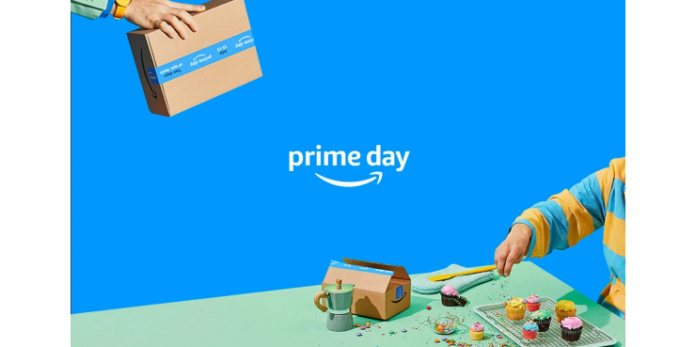Amazon’s highly anticipated Prime Day is once again coming around. From July 8th through July 11th, consumers belonging to the e-commerce conglomerate’s Prime subscription can take advantage of special deals and discounts.
Prime Day is just as much of a big deal for retailers as it is for shoppers, since many businesses on the platform use this e-commerce holiday to rack in sales and create new loyal customers. However, with the number of businesses that have set up accounts through Amazon, competition is fierce.
“Prime Day is massive, and not just for Amazon. It’s become a retail tentpole that lifts the entire ecosystem,” says Skydeo CEO Mike Ford. “But here’s what most people miss: it’s not just about the two-day event. The real opportunity is in the ‘Prime Week’ mindset, when consumers are primed (pun intended) to shop, look for deals and try new brands. If you’re a retailer and you’re not riding that wave, you’re missing one of the highest-intent windows of the year.”
So how can retailers stand out? We did some digging and put together our five best-selling tips to ensure brands make the most out of Prime Day.
1. Start Preparations Ahead of Time
Preparation is everything, so Ford suggests that retailers start their preparations weeks in advance. This includes segmenting your audience, utilizing data to find good prospects and making sure all your product pages, ad visuals, emails and landing pages are up to snuff.
“Make sure your inventory is aligned with demand forecasts,” he advises. “There’s nothing worse than running out midday. And don’t forget to warm up your audience with teaser campaigns and soft promos before the big push. Prime Day isn’t the starting line ─ it’s the main event. You want people in the funnel before it hits.”
Amazon also advises retailers to optimize your product detail pages. Before you start thinking about your advertising strategy for the event, ensure your product pages are optimized for sales since they help shoppers find relevant information fast and influence purchase decisions.
Here are some of Amazon’s best practices to help your product detail pages stand out:
- Create clear, focused titles. Include brand name, product type and key attributes in a readable format.
- Craft bullet points. Aim for three plus bullet points that focus on key benefits that matter most to shoppers.
- Feature high-quality images. Include at least four photos showing your product from multiple angles to help shoppers make confident purchase decisions.
- Add A+ content. Available to brands enrolled in Amazon Brand Registry, A+ content lets you describe your product features with enhanced images, text placements and stories.
2. Set Up Ads
Buying and setting up ads for Prime Day can certainly pay off for retailers, but only if you have a smart plan.
“Amazon ads get a ton of attention before Prime Day, and CPCs can spike, so if you’re going to play, do it intentionally,” says Ford. “We recommend investing early in building your ‘consideration’ pool, sponsored product ads, high-intent keyword targeting and even video ads if you have the creative horsepower.”
According to Amazon, retailers should consider advertising items with distinctive features and high customer review ratings that demonstrate your brand values and quality standards. Including both new launches and bestsellers in your strategy can help introduce shoppers to more of your offerings while supporting consistent performance.
3. Focus on Targeting
Combining multiple targeting types within your campaigns can be a balanced targeting strategy for Prime Day and year-round.
U.S. advertisers using Sponsored Products saw 5.3% higher return on ad spend (ROAS) and 19% higher conversion rate when they used two or more targeting types within their campaigns, compared to those using only a single targeting strategy, according to Amazon’s internal data.
“Use audience data to get in front of the right people, not just anyone,” Ford suggests. “One of the most effective ways to stand out is by combining your first-party customer data with third-party insights, like lifestyle, purchase behavior or app usage. This helps build predictive audiences that are more likely to convert.”
Ford’s pro tip? Lead with social proof.
“Reviews, UGC and influencer validation are all little trust signals that make a huge difference when shoppers are flooded with options.”
4. Prioritize Products with Deals or Coupons
Prime Day is all about deals, so consider focusing your advertising on products with deals or coupons.
According to Amazon, running Prime-exclusive discounts on your top-performing products alongside your advertising campaigns is another way to help increase visibility and engagement with shoppers. This approach of combining deals with advertising can help open more opportunities for shoppers to discover and purchase more of your products.
Ford says that the best sales tactic is one that has clarity and urgency.
“Shoppers don’t have time to decode complex offers,” he says. “’25% off everything, today only’ will outperform ‘Earn $20 after your third purchase’ every time.”
BOGO works great when framed right, according to Ford, especially for consumables or bundled products. Flash deals, limited-time offers and tiered discounts also perform well in a high-velocity shopping window like Prime Day.
“But whatever you offer, make it obvious, easy to redeem and consistent across channels,” Ford says. “Bonus points if you can personalize it, send loyal customers a sneak peek or exclusive early-access link to boost conversion.”
5. Turn New Shoppers into Loyal Customers
Prime Day shouldn’t be a one-night stand. You worked hard to acquire that customer, now it’s time to make them feel like a VIP.
“First, capture emails and opt-ins with a strong post-purchase flow,” advises Ford. “Then, follow up quickly, within 3-5 days, with a thank you email, a usage tip or a loyalty offer. This is your golden window to build a relationship.”
What’s the point of working hard to have a successful Prime Day if your customers aren’t sticking around? Show them how your products fit into their life going forward and build a relationship with them.





